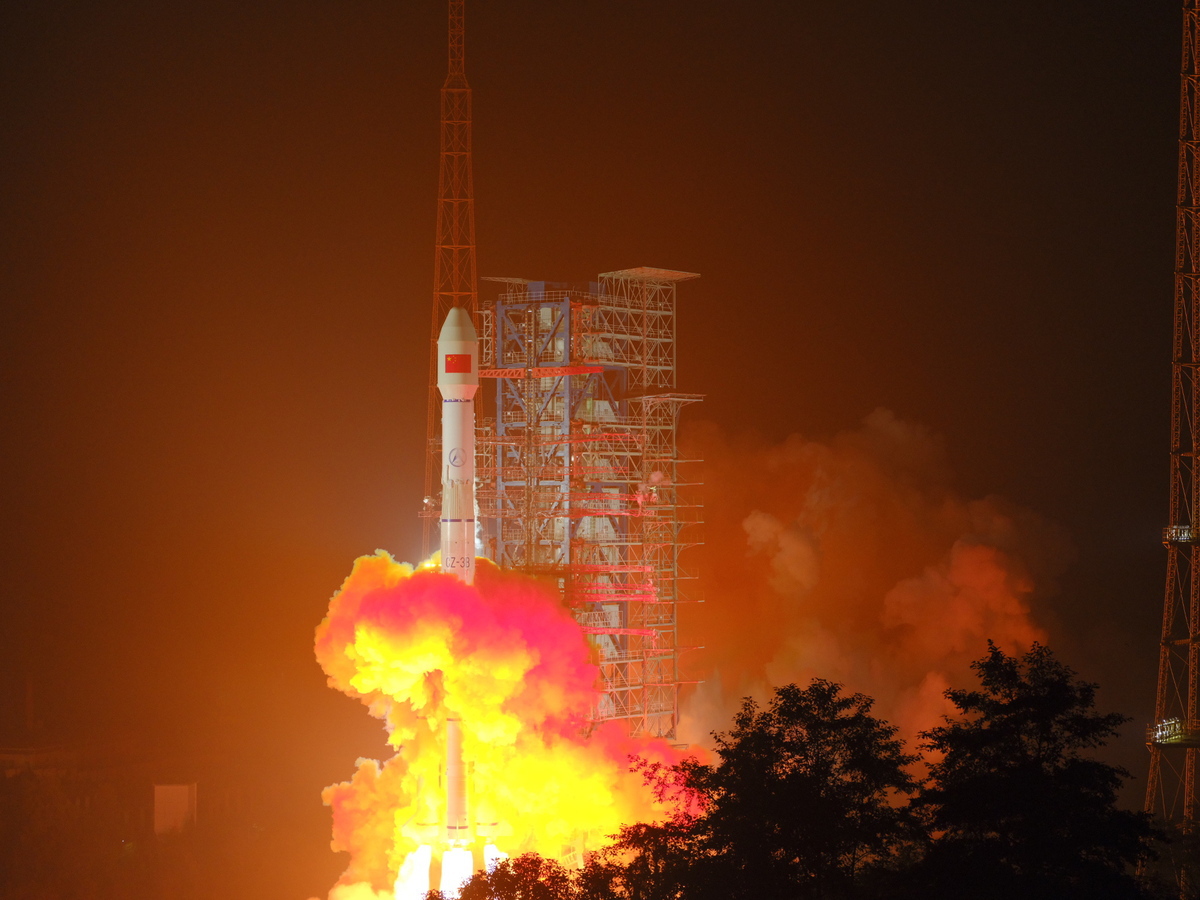Rocket carries satellite into space


China launched a Long March 3B carrier rocket on Thursday night to deploy a communications satellite into space, according to China Aerospace Science and Technology Corp, the nation's leading space contractor.
The rocket blasted off at 11:59 pm at the Xichang Satellite Launch Center in Sichuan province and then transported the Tiantong 1-02 to a geosynchronous orbit.
Tiantong 1-02 is the second satellite in the Tiantong 1 system, which is developed by the China Academy of Space Technology and consists of space-based assets, ground facilities and user terminals.
Tiantong 1, part of China's space-based information infrastructure, is the country's answer to the British-based Inmarsat network. The system is helping China break foreign companies' dominance in this field, the company said in a statement on Friday.
Tiantong 1-01, the first satellite in the network, was lifted into space in August 2016 and is working in a geosynchronous orbit.
Based on the DFH-4 satellite framework, the Tiantong 1-02 has a better design and higher flexibility than its predecessor. It is tasked with providing all-weather, all-time, stable and reliable mobile communication services to users in China and its surrounding areas, the Middle East, Africa and most parts of the Pacific and Indian oceans, the company said.
Chen Mingzhang, chief designer of Tiantong 1-02, said that the spacecraft is designed to function for at least 12 years and will be able to serve about 300,000 terminal users from a wide variety of industries such as geological survey, power generation and fishery.
Its service will be especially useful when users are in places with restricted access to traditional communication networks like mountains and plateaus, he explained.
He cited industry statistics as saying that there will be more than 3 million users of satellite-enabled mobile communication terminals by 2025, which means huge opportunities for networks like Tiantong 1.
The country's next space mission will likely be the Chang'e 5 lunar mission, which is expected to be launched by a Long March 5 heavylift rocket at the Wenchang Space Launch Center in Hainan province later this month.
Chang'e 5 will land a probe on the surface of the moon to collect samples and return them to Earth.
If the Chang'e 5 mission is successful, it will make China the third nation in the world to bring lunar samples back to the planet-after the United States and Russia-and will also make Chang'e 5 the world's first lunar sample-return mission in more than four decades.
- Smart teaching system launched for international Chinese learning
- Shanghai prepares to open parks 24 hours a day
- Action taken over Chongqing Gas Group overcharging
- Xi: Crucial role for new PLA force
- Obesity, myopia growing issues among youth
- Shanghai Coffee Culture Festival celebrates local coffee culture



































